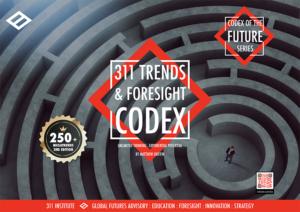
WHY THIS MATTERS IN BRIEF
In this situation who’s in control – the AI or the humans? Is Nestles marketing team now just slaves to the AI’s whims? Things to think about …
 Love the Exponential Future? Join our XPotential Community, future proof yourself with courses from XPotential University, read about exponential tech and trends, connect, watch a keynote, or browse my blog.
Love the Exponential Future? Join our XPotential Community, future proof yourself with courses from XPotential University, read about exponential tech and trends, connect, watch a keynote, or browse my blog.
In 2021, Nestlé embarked on an ambitious plan to put all its creative through an Artificial Intelligence (AI) platform that would rank ads based on their suitability to different online platforms and pull out the key elements that are required for maximum ROI.
That process created a set of ’rules’ for successful campaigns and early tests generated transformational results, finding that ads that meet the new creative requirements generate a significantly higher return on ad spend.
Now, Nestlé’s 15,000 marketers – who work across 2,000 brands in 200 territories – as well as its agency partners are required to run all creative assets through the system to check they meet the new requirements before they can run.
Leading the initiative is Aude Gandon, Nestlé’s senior vice-president and global Chief Marketing and Digital Officer. The decision to review its creative approach stemmed from her lofty ambitions for online marketing to account for 70% of Nestlé’s media mix. She wants it to pivot from being a TV-first advertiser to a digital-first one. This radical investment in digital media has meant Nestlé must ensure all of its online ads are as effective as possible.
“It’s not like the world of TV, where you have one creative and you can cut it down and put it on YouTube or Facebook,” she explains.
“We needed to help marketers understand that there are new rules of creative engagement on different platforms. Nestlé’s marketing operation is highly complex, with thousands of marketers – and even more agency partners – spanning hundreds of countries. The shift and evolution of media at the same time as the complexity of Nestlé meant we needed a way to give guidance and a framework.”
The marketer was also acutely aware of the “wasted time” when creatives are stressing over minute nuances between online platforms. Pre-established rules for creating online content, she says, would give its marketers and agencies “the space to talk about the creative again.”
Gandon sought the help of CreativeX, a company that builds creative data platforms for brands, and plugged thousands of historical campaigns into its AI, analyzing the ads to find the elements that drove better results. Once analyzed, the company created a new metric, the Creative Quality Score, which ranks an asset based on its suitability to different platforms such as Meta or YouTube.
CreativeX’s Chief Executive and founder Anastasia Leng explains that Nestlé wanted to know whether an ad meets the baseline to be successful in its environment.
“Creative Quality Score doesn’t always mean it being a great ad – it is necessary, but not sufficient, for great creative work.” An ad that doesn’t fit its environment, she says, is “like a car without wheels – it can’t get to its destination.”
An example of the types of learning include adding sound for the right platforms: for YouTube, sound is an amplifier, whereas on Meta 90% of content is watched without sound.
Once the review had been completed and the Creative Quality Score adopted, Nestlé integrated the tech into the platforms where it was running ads.
Today, Nestlé’s marketers and agency partners must upload new assets into CreativeX and check the score to see if it meets the requirements before it can run. And when a new rule is created, every marketer working on Nestlé campaigns will have to implement it from the minute it’s programmed into CreativeX.
“Before, someone would have had to do a roadshow and convince every creative agency they needed to move the logo and prove why it’s effective,” explains Leng. “Now, any new asset it creates can automatically be checked and we can spit out a report that says what was done right and what was done wrong in line with Nestlé’s guidelines.”















